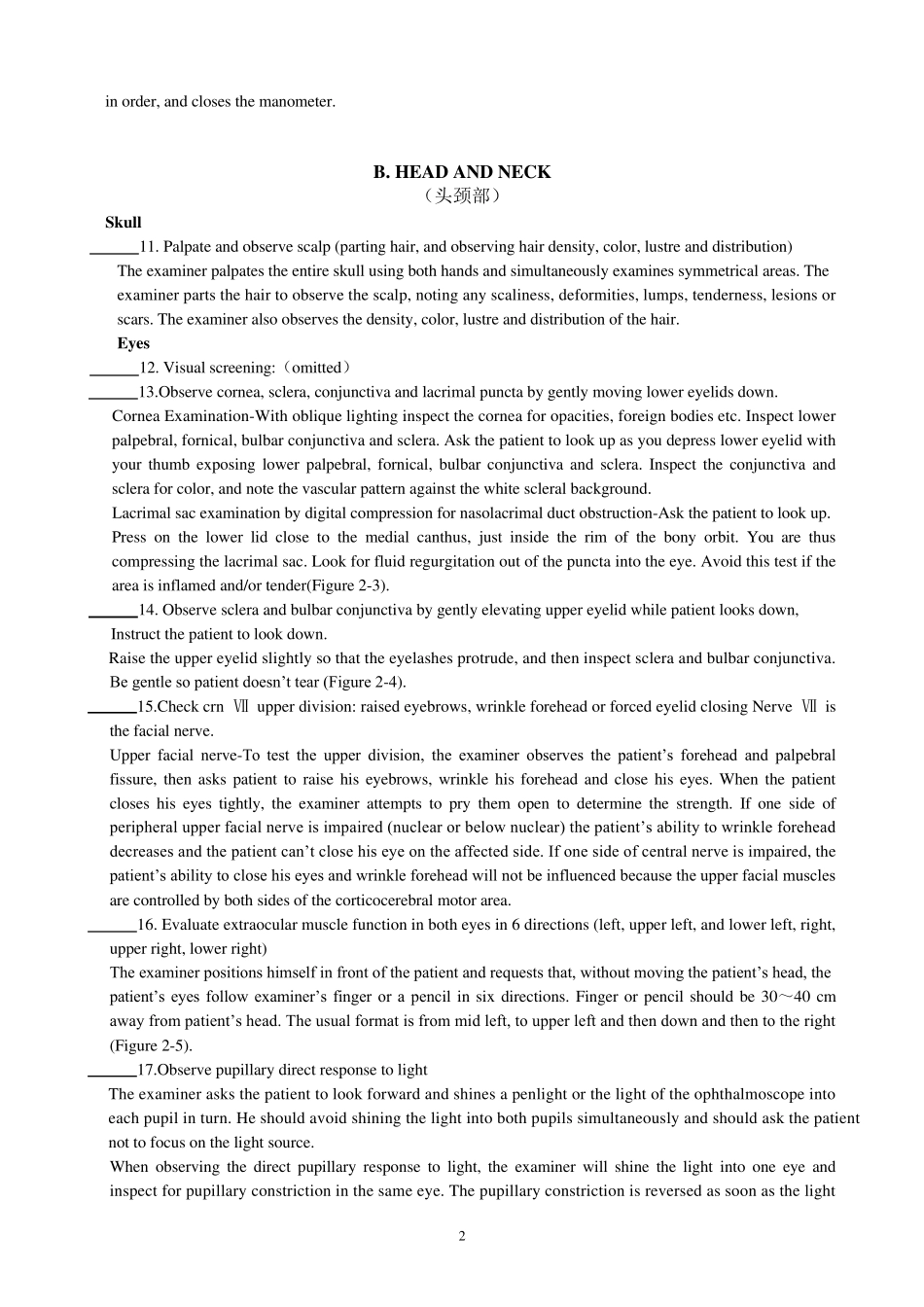A. GENERAL EXAMINATION/VITAL SIGNS (一般检查) 1. Introduce yourself to patient, usually last name and title and have a little conversation to relax the patient and to judge mental state. 2. Wash hands before starting examination Preferably, this should be done in view of the patient. 3. Patient is seated in a chair 4. Palpate radial (wrist) Pulses for at least 30 seconds and record The examiner places the pad of his index, middle and ring fingers over the radial artery. If properly done, the examiner should be able to feel the artery pulsating under the examiner’s fingertips. The radial pulse may be measured for 30 seconds, then the pulse perminute can be found by multiplying by two. Attention should also be paid to the rhythm. The examiner should not use his thumb to palpate any pulse. 5. Palpate both radial (wrist) pulses simultaneously for symmetry for at least 30 seconds 6. Measure respiratory rate for 30 seconds and record The examiner unobtrusively measures patient’s respiratory rate. This may be accomplished by the examiner leaving his hands on the patient’s wrists for another 30 seconds after measuring the radial pulses so the patient does not realize that the examiner is watching him breathe. The depth and rhythm should also be noticed. The respiratory rate can also be measured during the back exam. 7. Measure blood pressure on right arm Blood pressure may be measured with the patient in a sitting or lying position. In each position, the artery in which the blood pressure is to be measured should be at the level of the heart (at the level of the fourth intercostal space in the sitting position; at the level of the middle axillary line in the lying position). The pat...


